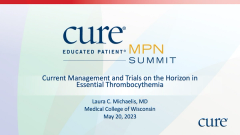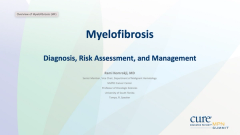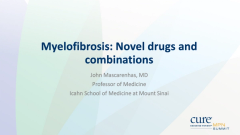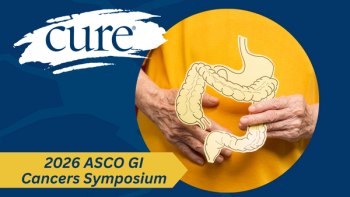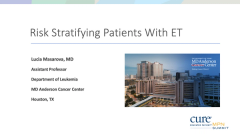
Educated Patient® MPN Summit ET Risk Stratification Presentation: May 20, 2023
Watch Dr. Lucia Masarova, from MD Anderson Cancer Center, discuss risk stratifying patients with essential thrombocythemia during the CURE® Educated Patient® MPN Summit.
Episodes in this series

Essential thrombocythemia (ET) “is really a disease that is considered benign,” Dr. Lucia Masarova, assistant professor in the department of leukemia at MD Anderson Cancer Center in Houston, stated during the CURE® Educated Patient® MPN Summit. “However,” she cautioned, “it comes with a lot of prices in terms of how people feel, and (it) should be paid attention (to) more.”
Common issues faced by patients with ET — a type of cancer associated with uncontrolled growth of blood platelets — include thrombotic and bleeding risks as well as vascular symptoms such as headaches, migraines, fatigue, difficulty concentrating, dizziness and numbness of the fingers. ET can also potentially progress to myelofibrosis or acute leukemia.
These issues, Masarova said, can impact patients’ lives and create personal, professional and financial toxicities.
“Patients (with ET) might have near normal life expectancy, (and) that makes the disease to be considered ‘benign’ or more indolent,” Masarova told CURE. “It is sometimes addressed by regular oncologists and, compared to other solid malignancies, it is seen as less dangerous.
“However, research showed that patients with ET might have far more symptoms and poor quality of life even when compared to those with ‘real cancers,’ as I sometimes hear. I believe that patients’ and doctors’ educations, disease awareness and summits like this are great opportunities to educate and bring attention to this disease. Social media play a huge role in this as well and well-handled information are needed for these patients, where the role of patient advocates is not adequately appreciated.
Masarova has some advice for patients with ET: “Please pay attention to your symptoms and discuss the goals of therapy and its management with your doctor,” she said in her post-summit interview with CURE. “Do not hesitate to reach out for a second opinion to see an expert in the field (as this is so rare) and share your story with patients if possible — you are your best advocate.”
Masarova, who focused on risk stratification for patients with ET during her talk at the Educated Patient Summit, noted that ET patient stratification is currently focused on thrombosis, also known as blood clotting. But she said that she looks forward to the day where treatment focus will be on preventing disease evolution and progression.
“Hopefully, we will be moving into more than that and start to assess disease modification, which means (asking) ‘Are we able to prevent the disease progression as the most immediate consequence?’” she said.
Masarova explained to CURE what this shift in goals would look like for patients in terms of treatment and potential outcomes.
“Hopefully, we will have a therapy that could change the disease course, mostly stop its progression to myelofibrosis, and can thus extend patients’ lifespans,” she said. “That would be excellent goal to achieve for outcomes. In terms of therapy, it would offer different options; currently, the only possible agent that can be capable of this and has some data, is interferon. It is injectable therapy, so it would challenge the treatment management and view. However, it is fairly easy to be handled by patients (rather than their providers) and I believe that would not create a major hurdle in therapy delivery.”
The original risk stratification model for patients with ET, Masarova said, focused on those who were older than 60 and had a history of blood clots.
Over time, researchers learned more about ET, including the role that the driving mutation of the JAK2 (Janus kinase 2) gene played in increasing thrombosis risk, and stratification models have evolved.
With changing stratification models, Masarova explained, “we are moving from paying attention to thrombosis and bleeding — which do represent the most significant consequences of the disease and could shorten people's lives — … (and) also are looking at what other factors could actually play a role for the disease progressing not only into thrombotic and bleeding but also to myelofibrosis, and (patients) overall not doing well.”
“I'm going to emphasize: high risk patients over the age of 60, with JAK2 mutation or any age patient with risk of thrombosis, that sends us an indication for using more than just aspirin and therapy,” Masarova said during the Educated Patient Summit. “That means high risk (for) patients.”
While providers and patients wait for more advanced therapies, Masarova explained that there are steps patients can take in order to reduce their risk of ET progressing or worsening.
“Every patient regardless of risk needs to control their blood pressure, sugar, weight and other cardiac risk factors to control the risk of blood clots,” she said. “The disease progression unfortunately can’t be addressed differently now, but I believe in the role of interferon, which should be offered to all patients eligible for it. As I mentioned above, this agent could affect the malignant clone more and should be considered. I would encourage all patients to speak to their doctor to see whether they could be a candidate for it and seek this as an option.”
For more news on cancer updates, research and education, don’t forget to

